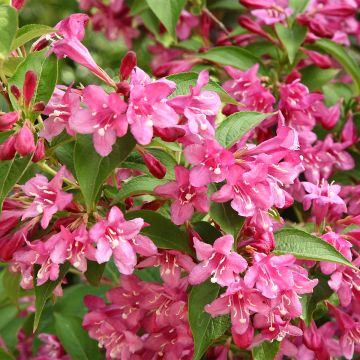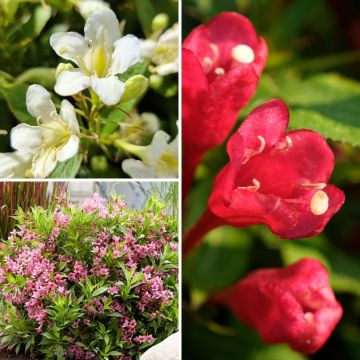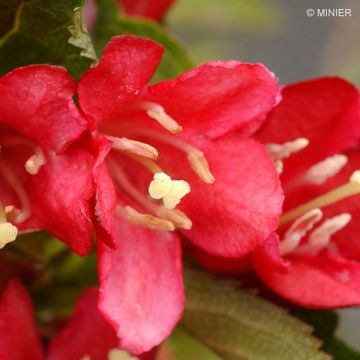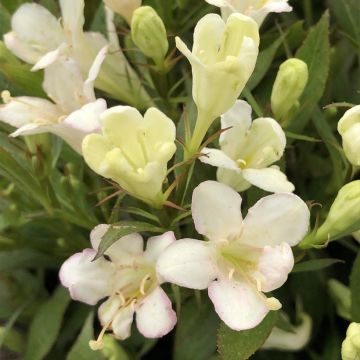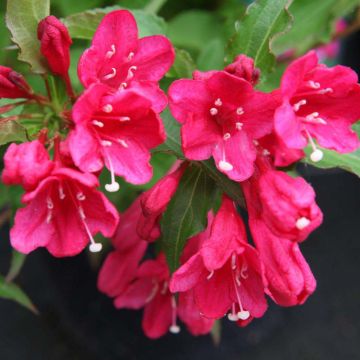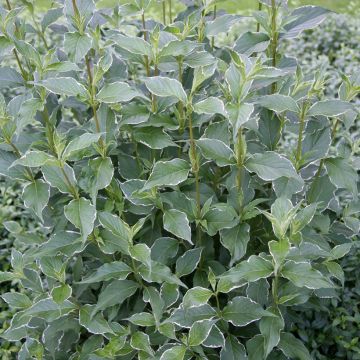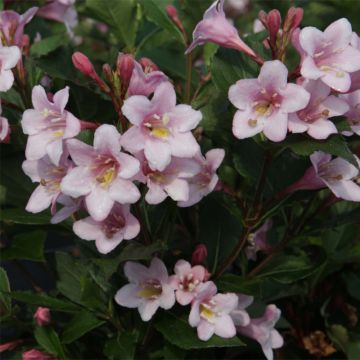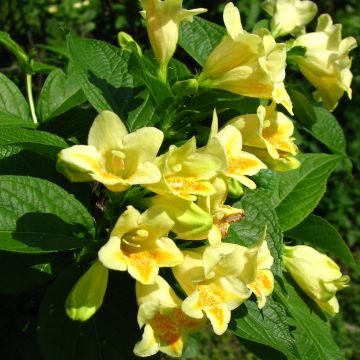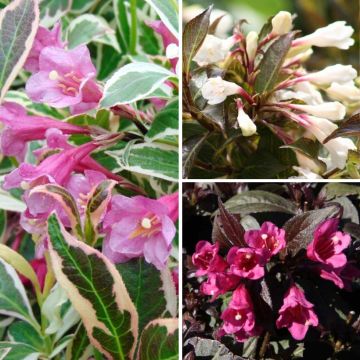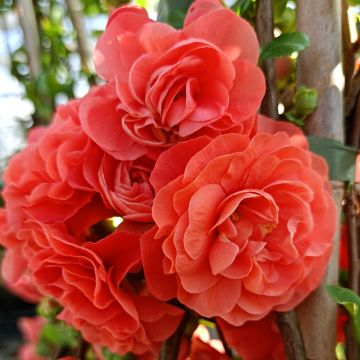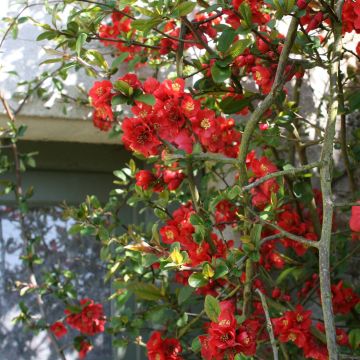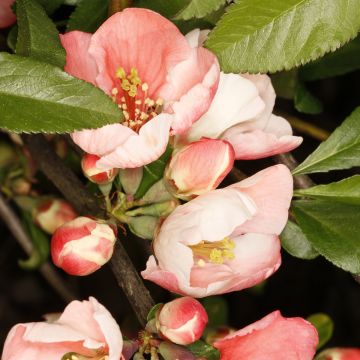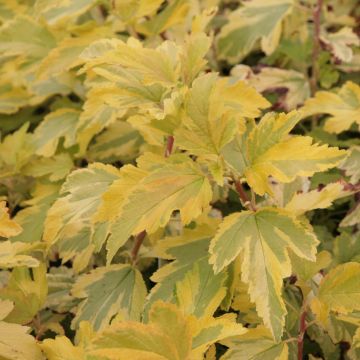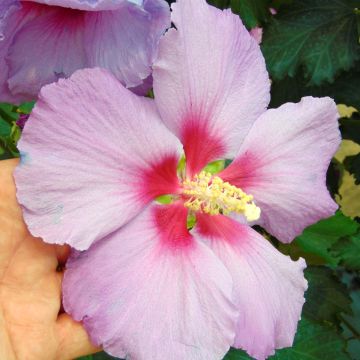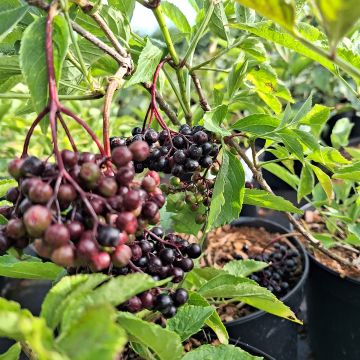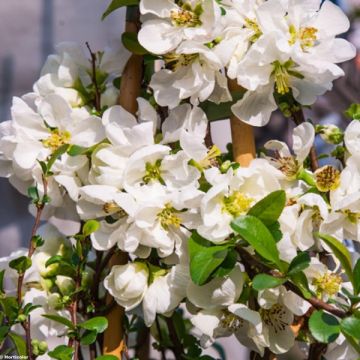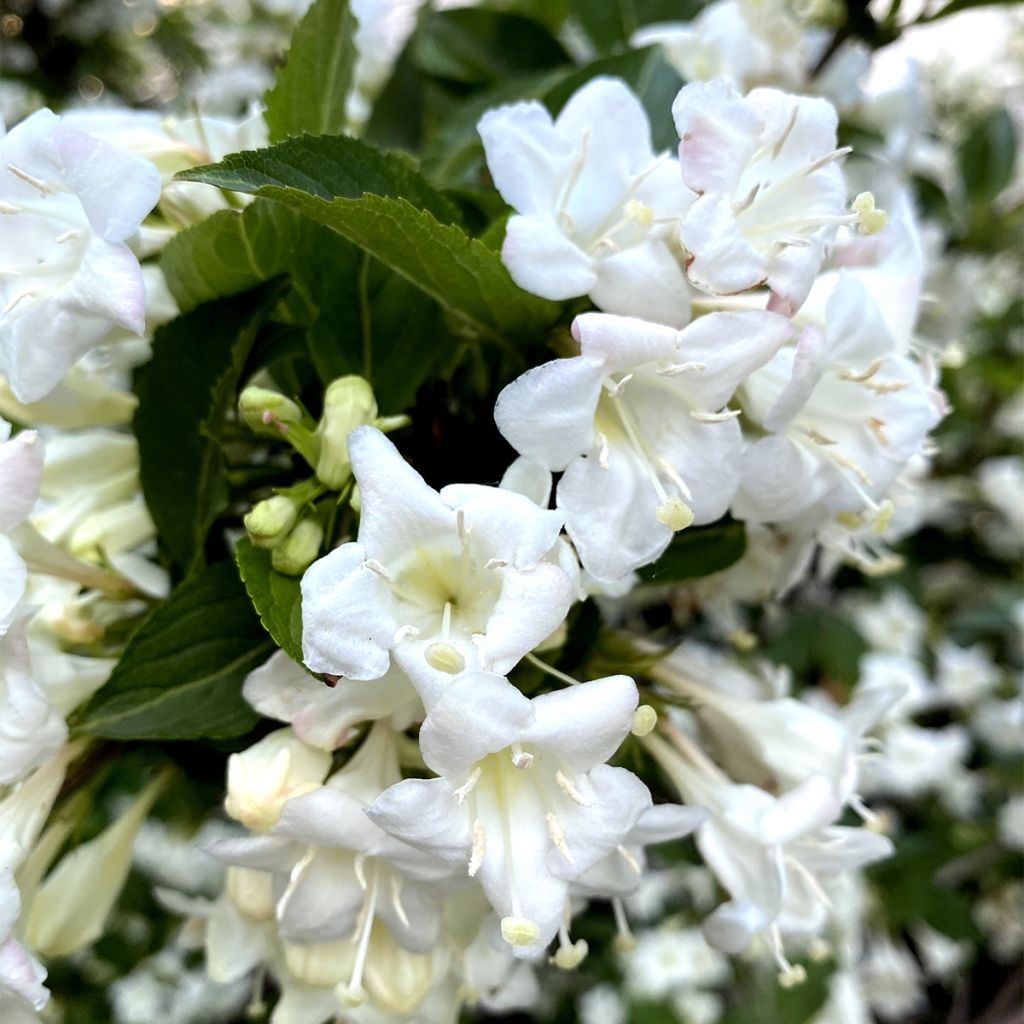

Weigela Snowflake
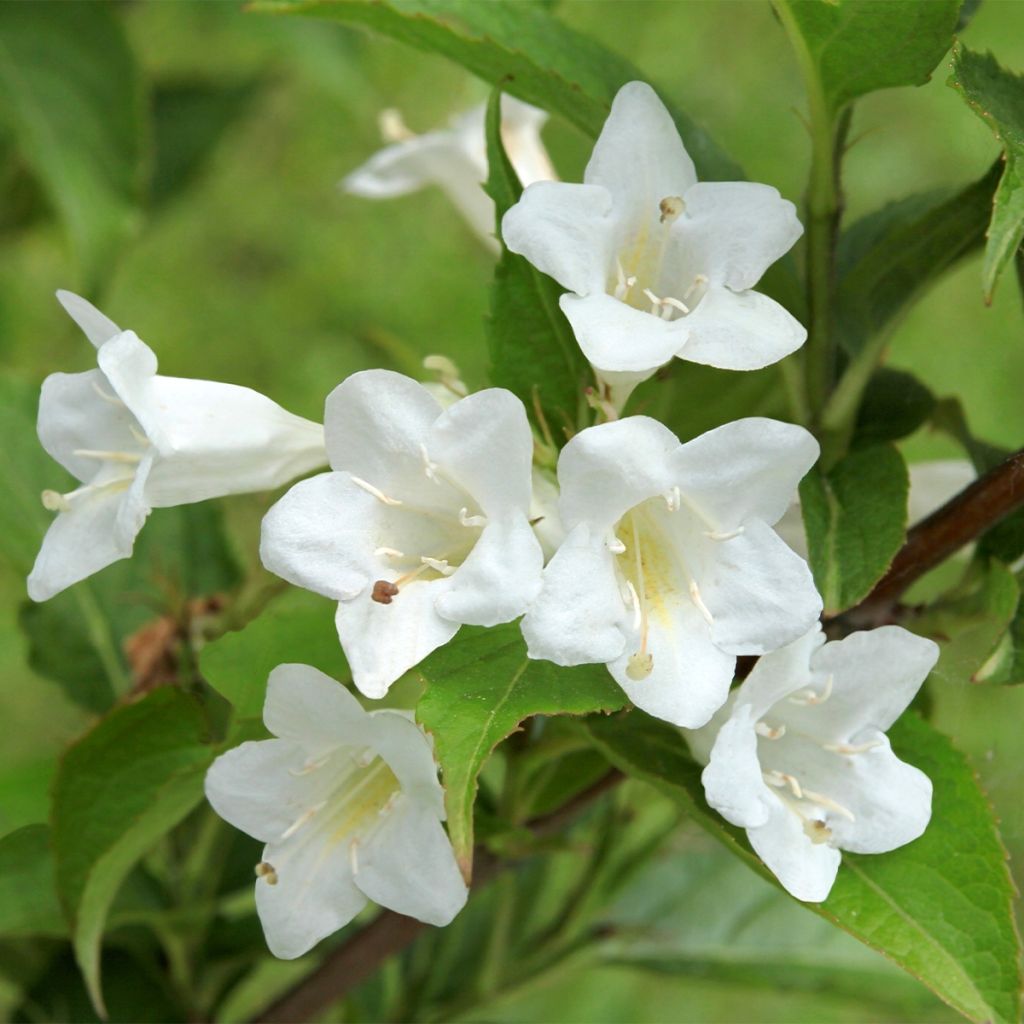

Weigela Snowflake
Weigela Snowflake
Weigela Snowflake
Old-fashioned Weigela
This item cannot be shipped to the selected country
Delivery charge from €5.90
Delivery charge from €5.90
More information
Schedule delivery date,
and select date in basket
This plant carries a 24 months recovery warranty
More information
We guarantee the quality of our plants for a full growing cycle, and will replace at our expense any plant that fails to recover under normal climatic and planting conditions.
From €5.90 for pickup delivery and €6.90 for home delivery
Express home delivery from €8.90.
From €5.90 for pickup delivery and €6.90 for home delivery
Express home delivery from €8.90.

Does this plant fit my garden?
Set up your Plantfit profile →
Description
Weigela 'Snowflake' is a variety of Weigela with very bright white tubular flowers. This medium-sized shrub reaches 1.5 m (5 ft) in all directions, with a bushy habit. Hardy and highly adaptable in terms of soil and exposure, it will grow in the sun or in partial shade. Its flowering period extends from May to early July, often with a second bloom in September.
Weigela belongs to the Caprifoliaceae family, which also includes honeysuckles (Lonicera) or the imposing Heptacodium, a large shrub with long-lasting flowering and particularly decorative bark in winter. Weigelas, once very trendy a few decades ago, have somewhat fallen out of favour in recent years. However, they are easy, generous, and adaptable plants that require little attention.
The Snowflake variety comes from a seedling of the famous 'Bristol Ruby' variety obtained at the Bristol nurseries (USA) in 1961. It is mainly distinguished by its bright white flowers. Its flowering period extends from May to early July, in the form of a profusion of small white trumpets lightly edged with pale pink. This shrub has bright green deciduous leaves with a slightly lighter underside and a very bushy habit. Its limited adult dimensions (1.8 x 1.5 m (6 x 5 ft)) and its average annual growth (20 to 40 cm (8 to 16 in)) make it a great choice for small gardens, either as a standalone plant or integrated into a flower bed.
Like all Weigelas, 'Snowflake' is highly adaptable: it appreciates limestone but will be satisfied with any good, well-drained garden soil that is not too dry, in the sun or in partial shade. It is hardy and can withstand temperatures down to -15 °C (5 °F). If necessary, prune the faded branches at their base, just after flowering - this will not compromise the next year's flowering. It is worth noting that even an older Weigela is easy to transplant thanks to its relatively shallow root system.
This shrub will be perfectly at home in a flower bed, especially when combined with pink or red blooms to create a colour contrast. Among other plants that are as easy to grow, we recommend the well-known 'Anthony Waterer' Spirea with vibrant pink flowers and a compact habit, which will make an excellent foreground choice. A beautiful hawthorn with dark pink flowers will support this Weigela in the background of a larger flower bed. Snowflake is also suitable for mixed hedges, in combination with other medium to large-sized shrubs such as Forsythia, Photinia, Escallonia...
Report an error about the product description
Weigela Snowflake in pictures
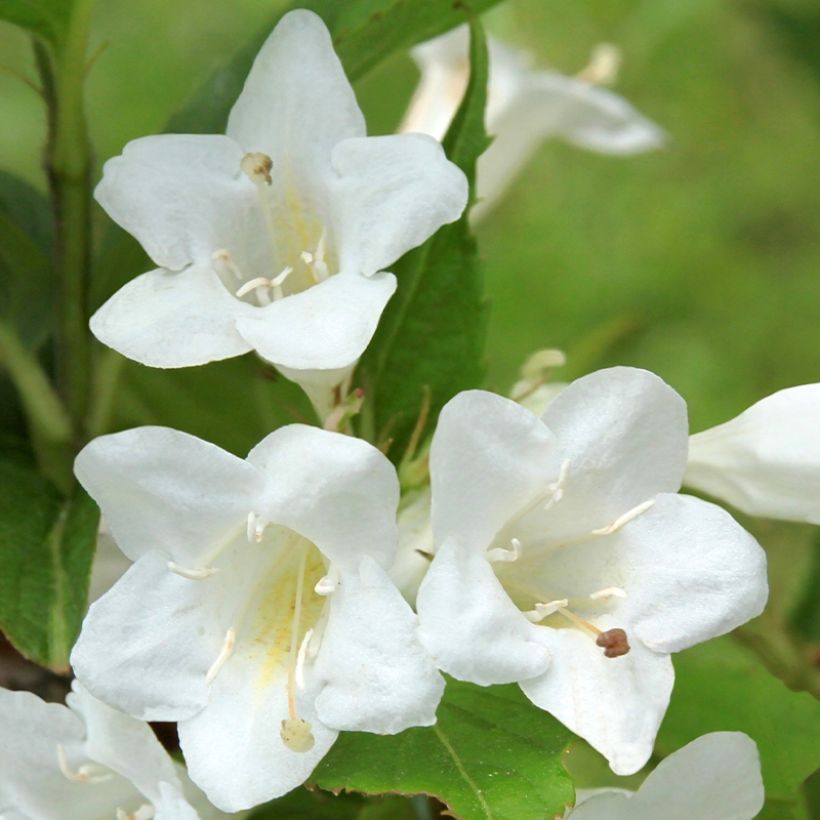

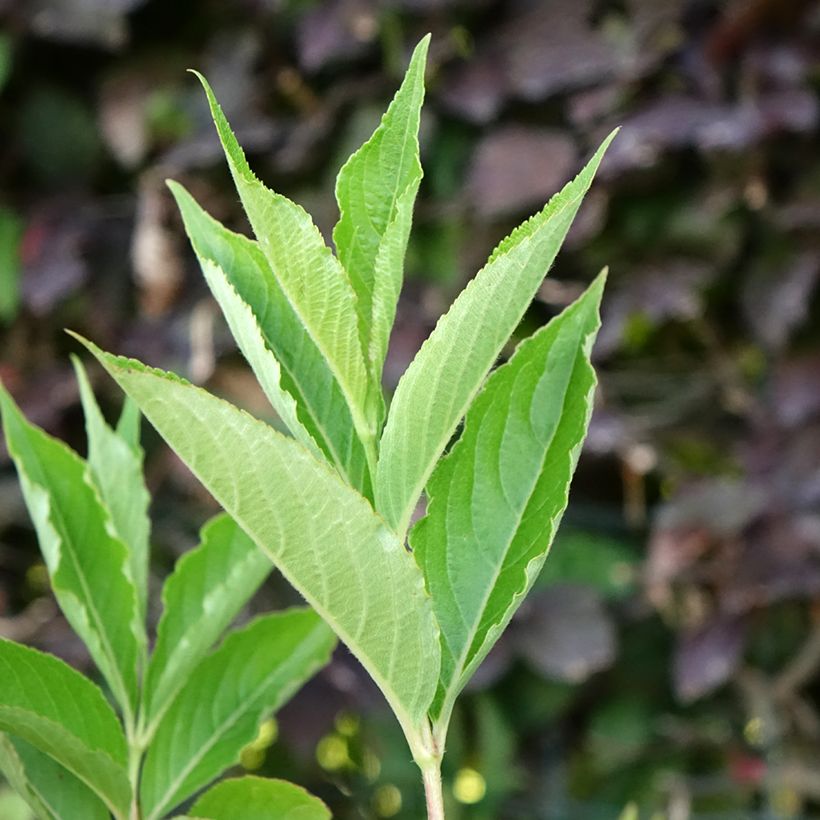

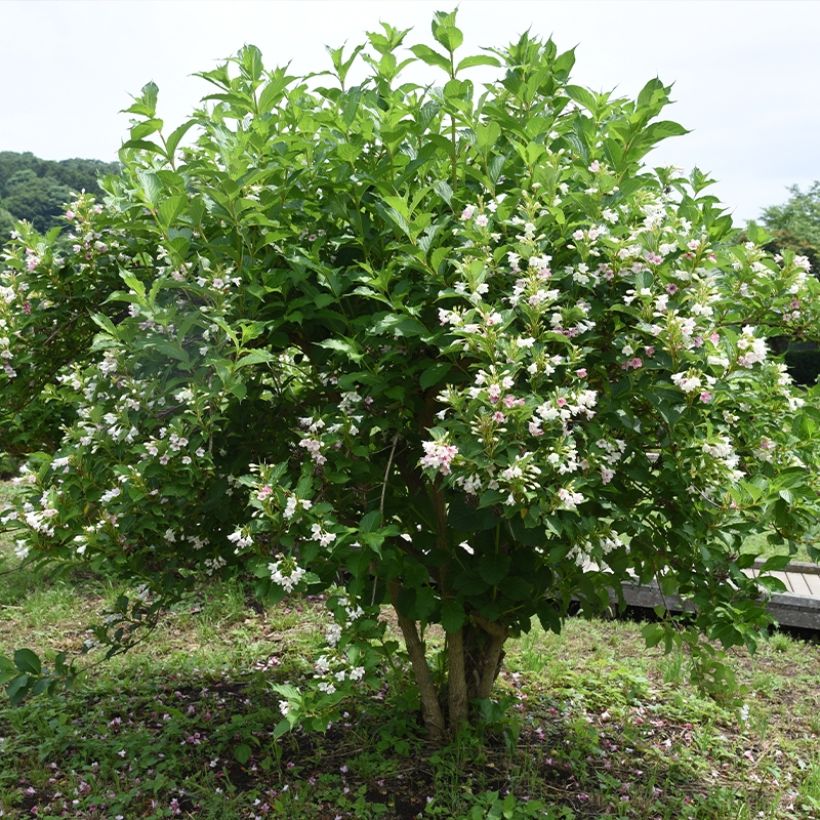

Plant habit
Flowering
Foliage
Botanical data
Weigela
Snowflake
Caprifoliaceae
Old-fashioned Weigela
Cultivar or hybrid
Other Weigela
Planting and care
Hardy down to -15 °C (5 °F), Weigela Snowflake thrives in sunny or semi-shaded positions. Plant it in a moist but well-drained ordinary soil, with a slightly alkaline neutral pH, from October to March (excluding the frost period). To encourage flowering, prune back the branches that have produced spring flowers by two-thirds, just after flowering.
Planting period
Intended location
Care
This item has not been reviewed yet - be the first to leave a review about it.
Foolproof Shrubs
Haven't found what you were looking for?
Hardiness is the lowest winter temperature a plant can endure without suffering serious damage or even dying. However, hardiness is affected by location (a sheltered area, such as a patio), protection (winter cover) and soil type (hardiness is improved by well-drained soil).

Photo Sharing Terms & Conditions
In order to encourage gardeners to interact and share their experiences, Promesse de fleurs offers various media enabling content to be uploaded onto its Site - in particular via the ‘Photo sharing’ module.
The User agrees to refrain from:
- Posting any content that is illegal, prejudicial, insulting, racist, inciteful to hatred, revisionist, contrary to public decency, that infringes on privacy or on the privacy rights of third parties, in particular the publicity rights of persons and goods, intellectual property rights, or the right to privacy.
- Submitting content on behalf of a third party;
- Impersonate the identity of a third party and/or publish any personal information about a third party;
In general, the User undertakes to refrain from any unethical behaviour.
All Content (in particular text, comments, files, images, photos, videos, creative works, etc.), which may be subject to property or intellectual property rights, image or other private rights, shall remain the property of the User, subject to the limited rights granted by the terms of the licence granted by Promesse de fleurs as stated below. Users are at liberty to publish or not to publish such Content on the Site, notably via the ‘Photo Sharing’ facility, and accept that this Content shall be made public and freely accessible, notably on the Internet.
Users further acknowledge, undertake to have ,and guarantee that they hold all necessary rights and permissions to publish such material on the Site, in particular with regard to the legislation in force pertaining to any privacy, property, intellectual property, image, or contractual rights, or rights of any other nature. By publishing such Content on the Site, Users acknowledge accepting full liability as publishers of the Content within the meaning of the law, and grant Promesse de fleurs, free of charge, an inclusive, worldwide licence for the said Content for the entire duration of its publication, including all reproduction, representation, up/downloading, displaying, performing, transmission, and storage rights.
Users also grant permission for their name to be linked to the Content and accept that this link may not always be made available.
By engaging in posting material, Users consent to their Content becoming automatically accessible on the Internet, in particular on other sites and/or blogs and/or web pages of the Promesse de fleurs site, including in particular social pages and the Promesse de fleurs catalogue.
Users may secure the removal of entrusted content free of charge by issuing a simple request via our contact form.
The flowering period indicated on our website applies to countries and regions located in USDA zone 8 (France, the United Kingdom, Ireland, the Netherlands, etc.)
It will vary according to where you live:
- In zones 9 to 10 (Italy, Spain, Greece, etc.), flowering will occur about 2 to 4 weeks earlier.
- In zones 6 to 7 (Germany, Poland, Slovenia, and lower mountainous regions), flowering will be delayed by 2 to 3 weeks.
- In zone 5 (Central Europe, Scandinavia), blooming will be delayed by 3 to 5 weeks.
In temperate climates, pruning of spring-flowering shrubs (forsythia, spireas, etc.) should be done just after flowering.
Pruning of summer-flowering shrubs (Indian Lilac, Perovskia, etc.) can be done in winter or spring.
In cold regions as well as with frost-sensitive plants, avoid pruning too early when severe frosts may still occur.
The planting period indicated on our website applies to countries and regions located in USDA zone 8 (France, United Kingdom, Ireland, Netherlands).
It will vary according to where you live:
- In Mediterranean zones (Marseille, Madrid, Milan, etc.), autumn and winter are the best planting periods.
- In continental zones (Strasbourg, Munich, Vienna, etc.), delay planting by 2 to 3 weeks in spring and bring it forward by 2 to 4 weeks in autumn.
- In mountainous regions (the Alps, Pyrenees, Carpathians, etc.), it is best to plant in late spring (May-June) or late summer (August-September).
The harvesting period indicated on our website applies to countries and regions in USDA zone 8 (France, England, Ireland, the Netherlands).
In colder areas (Scandinavia, Poland, Austria...) fruit and vegetable harvests are likely to be delayed by 3-4 weeks.
In warmer areas (Italy, Spain, Greece, etc.), harvesting will probably take place earlier, depending on weather conditions.
The sowing periods indicated on our website apply to countries and regions within USDA Zone 8 (France, UK, Ireland, Netherlands).
In colder areas (Scandinavia, Poland, Austria...), delay any outdoor sowing by 3-4 weeks, or sow under glass.
In warmer climes (Italy, Spain, Greece, etc.), bring outdoor sowing forward by a few weeks.


































